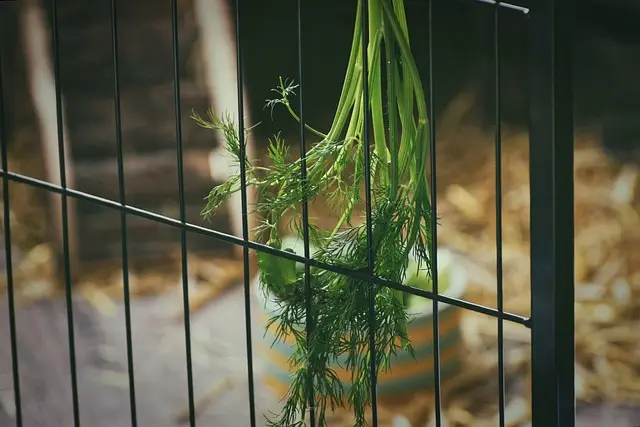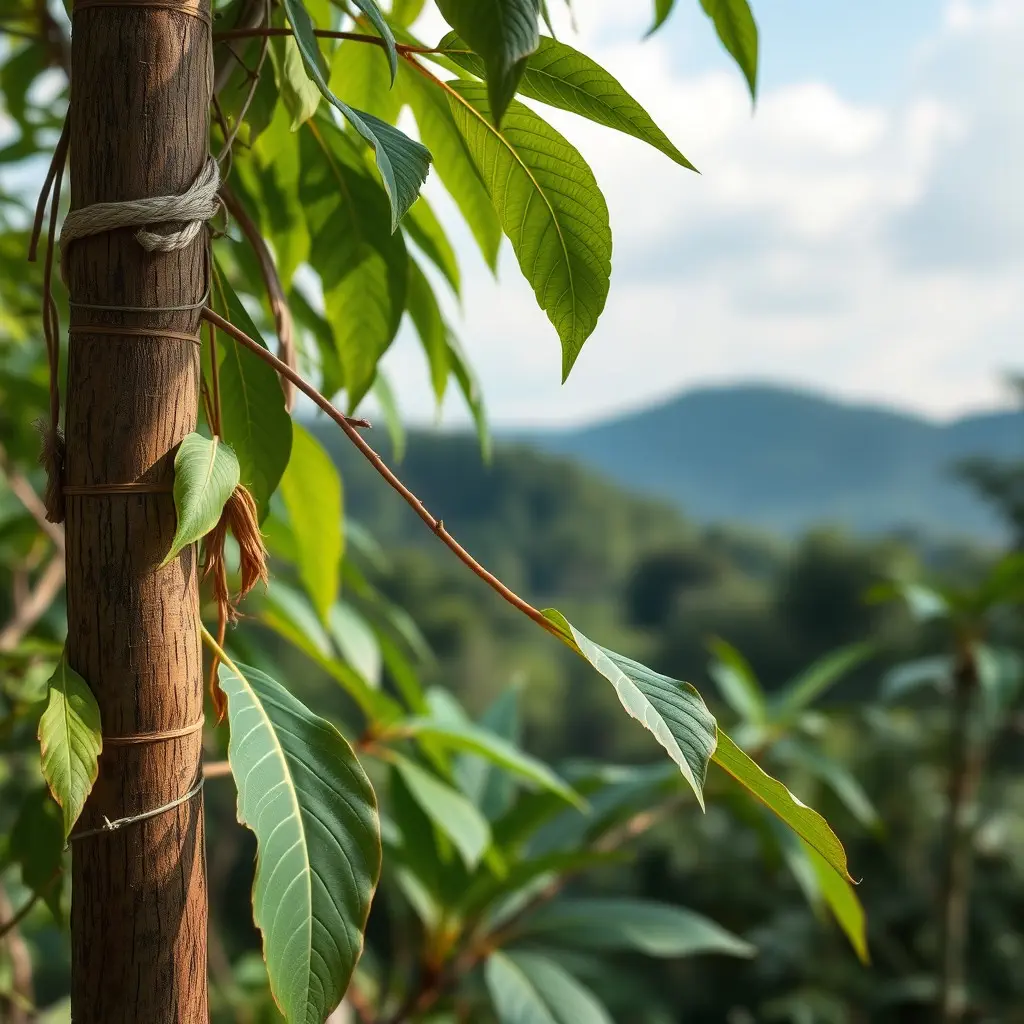Malaysian Kratom, a unique strain from Southeast Asia's lush environments, is renowned globally for its distinct alkaloid profiles shaped by the country's diverse climates. Strains from Pahang and Kelantan are particularly revered due to their rich terroir, influencing the potency of Kratom's effects. Users differentiate among Malaysian Kratom based on vein colors—red, white, and green—each offering a unique experience: Red Vein for relaxation and potential sleep aid, White Vein for energy and cognitive enhancement, and Green Vein for a balanced energy boost. The strain's characteristics are further refined by factors like leaf maturity, vein color intensity, and cultivation techniques, which local farmers expertly manage to produce high-quality Kratom. Sustainable cultivation practices and careful processing ensure the product's potency and natural qualities are preserved. Malaysian Kratom has garnered scientific interest and is a topic of ongoing research due to its unique alkaloid composition. Its legality varies by region, with significant implications for both researchers and consumers, necessitating informed decisions and up-to-date knowledge on legalities and public health considerations. Users are advised to experiment with Malaysian Kratom mindfully, considering the distinct strengths and characteristics of each strain. The intricate regulatory landscape underscores the need for clear guidance and educational resources to navigate the safe and lawful consumption of this botanical substance.
Explore the intricate world of Malaysian Kratom, a botanical gem revered for its nuanced effects and potent properties. This article delves into the diverse strains of this mitragyna speciosa variant, shedding light on their distinct influences and the meticulous cultivation practices that yield superior quality buds. Navigate through the harvesting process that underscores the unique characteristics of Malaysian Kratom, while also considering the evolving legal framework surrounding its use. Understanding the implications within the consumption landscape is paramount for anyone interested in the benefits and challenges associated with this natural substance. Join us on a detailed exploration of Malaysian Kratom, its cultivation, and its place within the regulatory sphere.
- Unveiling the Potency of Malaysian Kratom: A Comprehensive Guide to Its Strains and Effects
- The Harvesting Process: How Malaysian Kratom Buds Are Cultivated for Optimal Quality
- Understanding the Legal Landscape and Consumption Implications of Malaysian Kratom
Unveiling the Potency of Malaysian Kratom: A Comprehensive Guide to Its Strains and Effects

Malaysian Kratom, hailing from the verdant landscapes of Southeast Asia, has garnered international attention for its potent effects and varied strains. The country’s unique climatic conditions contribute to the distinct alkaloid profiles found in Malaysian Kratom compared to its counterparts. Among the most revered strains are those sourced from the states of Pahang and Kelantan, known for their robust Mitragyna speciosa trees. These regions offer a rich terroir that influences the plant’s chemical composition, affecting both the intensity and duration of its effects.
Within the realm of Malaysian Kratom, users often differentiate between strains based on their color veins—red, white, and green—each offering a unique user experience. Red Vein Malaysian Kratom is celebrated for its sedating properties, ideal for relaxation or as an aid to manage sleep disturbances. White Vein strains are known for their stimulating effects, often used to enhance focus and cognitive function. The Green Vein variants present a balanced profile, providing a moderate energy boost without overwhelming stimulation, making them versatile for both daytime use and gentle evening relaxation. Each strain’s potency and user experience are further nuanced by factors such as leaf maturity, vein color intensity, and the specific cultivation practices employed by local farmers. Users interested in exploring the full spectrum of Malaysian Kratom’s effects are encouraged to approach these strains with care, respecting their individual potencies and unique characteristics.
The Harvesting Process: How Malaysian Kratom Buds Are Cultivated for Optimal Quality

Malaysian Kratom, harvested from the Mitragyna speciosa tree native to Southeast Asia, is renowned for its unique alkaloid profile and potent effects. The cultivation of Kratom in Malaysia is a meticulous process that ensures the highest quality of the product. The journey of Malaysian Kratom buds from seedling to harvest is one that emphasizes sustainability and attention to detail. Farmers in Malaysia, who are well-versed in the nuances of Kratom cultivation, typically begin by selecting mature trees with optimal alkaloid content for propagation. These cuttings are then nurtured in controlled environments, where soil quality, water supply, and shade levels are carefully managed to mirror the tree’s natural habitat.
As the Kratom plants mature, farmers monitor their growth closely, noting the strain’s specific maturation times and environmental preferences. Harvesting is a critical stage that demands precision; the buds must be picked at the peak of maturity to capture the essence of Malaysian Kratom’s therapeutic potential. Skilled harvesters use a method that minimizes plant stress, ensuring that the alkaloid content remains intact and the final product retains its potency. Post-harvest, the buds undergo minimal processing, preserving their natural integrity. This dedication to the cultivation process results in a superior Kratom product that is sought after by consumers globally for its quality and efficacy.
Understanding the Legal Landscape and Consumption Implications of Malaysian Kratom

In recent years, Malaysian Kratom has garnered attention within both scientific and recreational circles due to its unique properties. Kratom, a tropical tree from the coffee family indigenous to Southeast Asia, is renowned for its alkaloid compounds which can have various effects on consumers. The legal status of Malaysian Kratom fluctuates across different regions; while it is legal in Malaysia, its regulatory standing in other countries varies, presenting a complex landscape for both producers and consumers. International regulations often classify Kratom as a controlled substance, highlighting the need for careful consideration by those interested in its use. The implications of these legal distinctions are profound, influencing not only the availability but also the research and development surrounding this botanical. Users contemplating the consumption of Malaysian Kratom must be acutely aware of the legal framework within their jurisdiction to avoid legal repercussions and ensure safe access to the product.
Navigating the legal landscape for Malaysian Kratom also requires an understanding of the potential impacts on public health and societal well-being. The consumption of Kratom has been linked to both positive and negative outcomes, underscoring the importance of responsible use. As research continues to evolve, regulators are tasked with balancing the potential benefits and risks associated with Kratom’s use. Consumers should stay informed about ongoing legal changes and scientific findings to make educated decisions about its consumption. The nuanced regulatory environment also underscores the need for clear guidelines and educational initiatives to support safe and lawful usage of Malaysian Kratom.
Malaysian Kratom stands out as a unique and potent botanical, offering a variety of effects that have intrigued users worldwide. The meticulous cultivation practices employed in its harvesting ensure a high-quality product, setting it apart from other strains. As detailed in this guide, the legal status of Malaysian Kratom varies, highlighting the importance for consumers to be well-informed about the regulations in their jurisdiction. This article provides a thorough understanding of the different strains, their effects, and the cultivation process that contributes to its quality. Users are encouraged to approach Kratom with caution and respect for the law, recognizing its potential and limitations within the context of their local legal framework.






